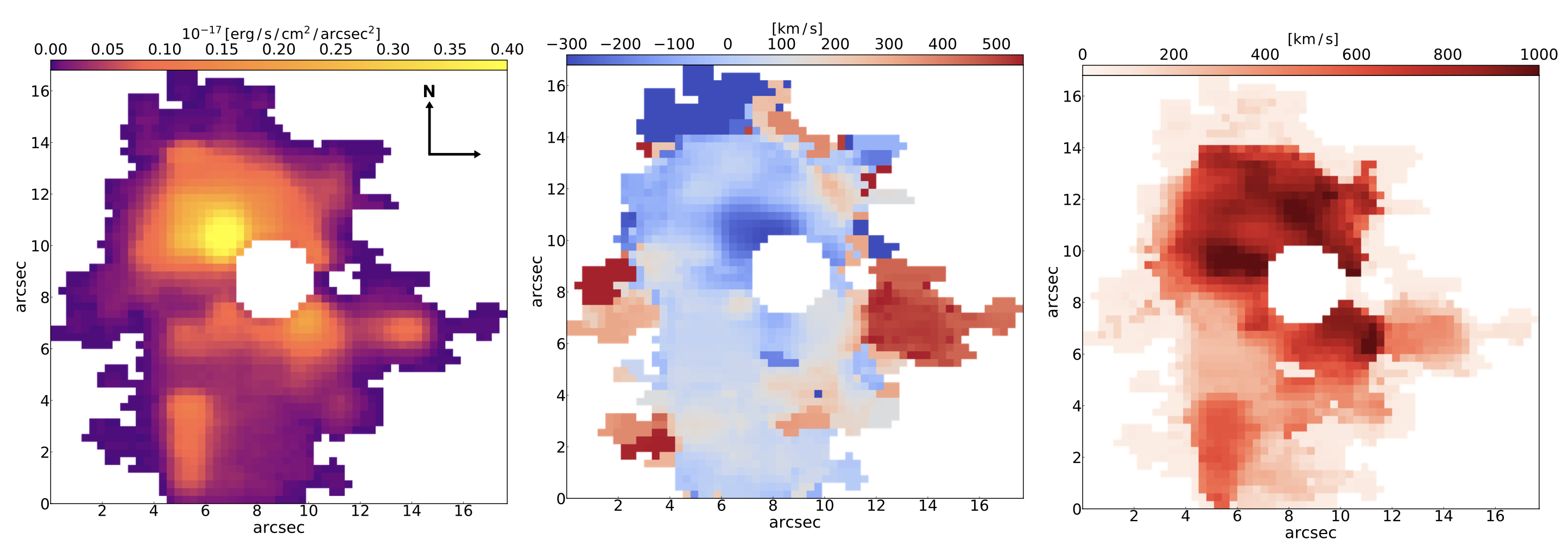
Galaxies and Their Environment at Cosmic Noon
My research focuses on understanding the co-evolution of galaxies and their environment in high-redshift protoclusters (z~2), a critical epoch known as Cosmic Noon, when star formation and black hole activity peaked in the universe. Using a combination of integral field spectroscopy (KCWI) and high-resolution imaging (HST), I investigate how gas kinematics, AGN feedback, and large-scale structure interactions shape the evolution of these dense regions.
A key aspect of my work is analyzing the circumgalactic medium (CGM) and intergalactic medium (IGM) within protocluster environments. By mapping Lyman-alpha emission, I trace the distribution and dynamics of diffuse gas, providing insights into:
- Gas inflows and outflows regulated by AGN-driven feedback.
- The role of mergers and interactions in triggering star formation.
- The connection between large-scale structures and galaxy evolution, using filamentary gas structures as a probe of protocluster assembly.
My work also examines AGN activity within protoclusters, investigating how supermassive black holes influence their host galaxies and surrounding gas. By combining spectroscopic data with morphological analysis from HST, I aim to quantify the impact of AGN-driven winds on star formation quenching and the role of environmental effects in shaping early cluster formation.
See one of my presentations here.

Moment maps of Lyman-alpha emission in a high-redshift protocluster, revealing gas dynamics, AGN-driven outflows, and environmental interactions.